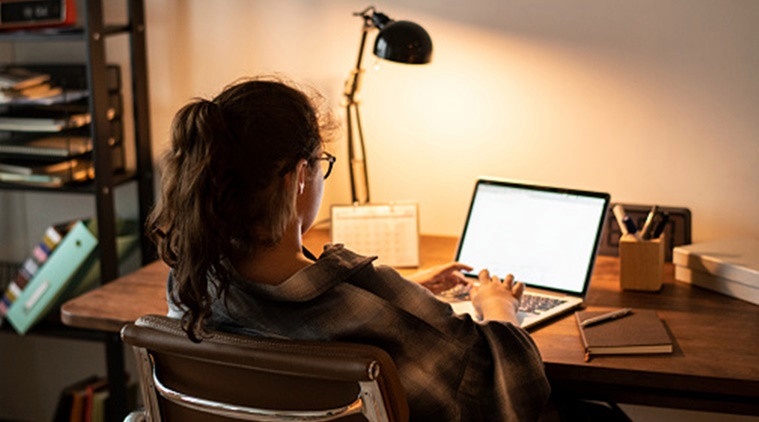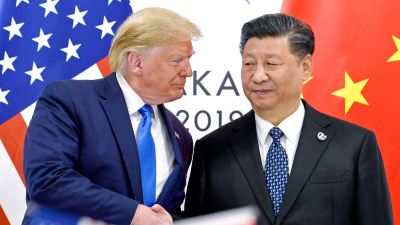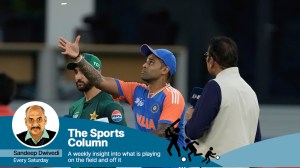Maharashtra: Only half of students in state have access to online learning, finds survey
Although 59.8 per cent of them have access to smart phones with Internet, only 30 per cent are using the Diksha app — the state’s online platform for educational content — and other such online mediums.
 Of those who are not able to access online learning, 72.2 per cent parents do not have digital skills to access the home package devised by the state and 66.4 per cent families do not have access to smart phones. (Representational)
Of those who are not able to access online learning, 72.2 per cent parents do not have digital skills to access the home package devised by the state and 66.4 per cent families do not have access to smart phones. (Representational)
Even as the state school education department has advocated that education be imparted through TV channels, mobile apps and online classes, a recent survey conducted by the Maharashtra State Council of Educational Research and Training (MSCERT) in collaboration with the UNICEF, has found that only 50 per cent of government school students in classes I to VIII could access digital learning.
Although 59.8 per cent of them have access to smart phones with Internet, only 30 per cent are using the Diksha app — the state’s online platform for educational content — and other such online mediums. Of those who are not able to access online learning, 72.2 per cent parents do not have digital skills to access the home package devised by the state and 66.4 per cent families do not have access to smart phones. Availability of desktop and laptop among students is also negligible (0.8 per cent).
There is a clear social divide in terms of access, the survey said. “More households in urban areas have access compared to the rural areas. In households from the ST (Scheduled Tribes) population, access is lowest at 42.6 per cent, while it is highest at 73.5 per cent among the general (category) social group. Seventeen per cent households do not have any facilities such as smart phone, Internet, radio and TV. Over 20 per cent families don’t have any facilities in ST and NT (Nomadic Tribes) social groups and in Nashik and Nagpur education divisions,” said the report.
Overall, 50.5 per cent students have accessed online learning material. Thirty-four per cent students each studied via digital learning material and TV, followed by online classes (26 per cent) and radio (10 per cent), it said.
“Although there is no significant difference in boys and girls, there is significant difference in access on the following parameters — location (urban/rural), children with special needs and social groups,” the report said.
Amaravati division has the lowest access to learning resources, followed by Konkan and Nagpur divisions. In terms of region, Vidarbha has the lowest access to online learning, followed by Marathwada and Khandesh.
Only one device shared by family, lack of digital skills on part of the parents to access the material, issues regarding recharge of phone/Internet facility, connectivity problem especially in remote blocks, children getting distracted on devices (for example, playing game on cellphones), material not being available in their medium of instruction (for example, Urdu, Kannda and Gujarati), were found to be barriers in accessing online education.
The hybrid model of learning needs to be promoted by the state, the survey suggested. “Home learning package should include more learning material on other platforms such as TV (70 per cent) and through phone calls/ SMS (90 per cent) to ensure wider reach. Consider opening schools in areas with no facilities or limited reach after accessing safety,” the report added.
The survey studied access to learning from the resources made available to 6,855 children from 737 schools. While 5,409 students were from rural areas, 1,446 were from urban areas. Of the total students, 24 per cent belonged to Other Backward Class, 17 per cent to ST, 11 per cent to NT, 6 per cent to Vimukt Jati and 26 per cent to the general category.
Two blocks from each district (blocks with highest and the lowest literacy rates) were selected, and over 72 blocks studied.
“The survey was conducted before June 15. Post this, we have been taking necessary action on all levels to ensure that students get the benefit of studying at home. We will soon conduct another survey to study how students have been learning after the virtual reopening of schools,” said Dinkar Patil, Director of MSCERT.
Early this month, the department had launched educational programmes on digital television channels. However, it is yet to start programmes on local TV channels.
In rural areas, the local administration has ensured that textbooks reach students. Speaking to The Indian Express, an education officer in the department said, “In many rural areas, including Gadchiroli and Chandrapur, there is no Internet network for most of the time. It is not possible for children to study online. We have been trying to send teachers to villages to conduct sessions in open spaces.”







